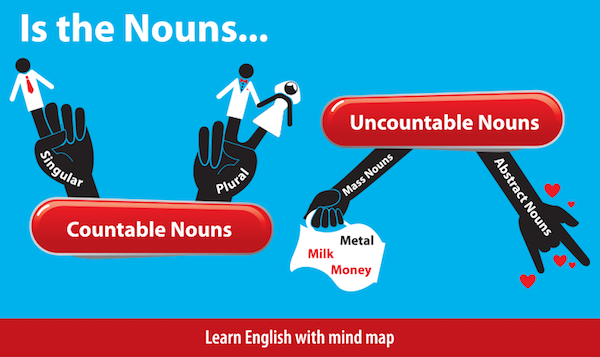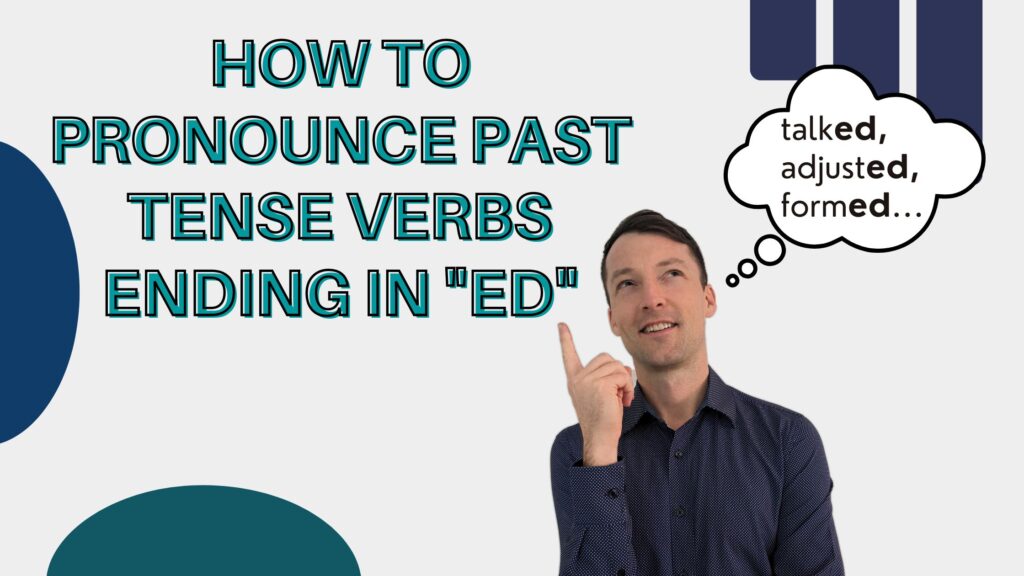English has two kinds of nouns, count and non-count nouns. It is important to understand the difference between them. This is because some quantity words go with count nouns and some with non-count nouns. Today I explain the difference between count and non-count nouns. I also talk about which quantity words go with one, and which words go with the other. In addition, I give you example sentences. The download at the end will give you some common non-count nouns.
Here is the free video lesson I taught on count vs non count nouns in English:
Subscribe to our YouTube Channel to see all of our lessons and get the latest videos right away!
All noun in English are either count nouns or non-count nouns.
What is a count noun?
A count noun is a noun that you can easily count Some examples are pencil, rooms, people, brothers, bananas, or students. For example, you can easily tell someone how many brothers you have. A count noun may be singular or plural.
What is a non-count noun?
A non-count noun is a noun that exists, but you cannot easily count it. Although a non-count noun may imply many items, it is usually written in the singular. There are several types of non-count nouns.
- Some non-count nouns are very general. However, many of these nous have elements within them that are countable.
- traffic (This is a non-count noun.)–However, cars, trucks and bicycles are count nouns.
- money (This is very general and also non-count.)–However, we can count dollars, euros, pesos, and rials
- furniture (This is non-count). We can, however, count tables, chairs, and sofa.
- Non-count nouns are also often liquids: soup,water, tea, coffee In this case, please not that although the liquid is non-count, we can count the container the liquid comes it. We can say a glass of water. We cannot count the water, but we can count the glass.
- Some non-count nouns are too small to be counted individually: salt, sugar, sand, flour
- Some non-count nouns are abstract. You know it exists, but you can’t see it or touch it: beauty, friendship, time, information, electricity
There are a small number of nouns that may be both count or non-count, depending on who they are used.
The word time can be both a count and non-count nouns. Here are some examples.
Time as a count noun: I have only been to New York City one time. We can easily count how many times we have visited New York City.
Time as a non-count noun: I don’t have time to help you right now. In this sentence, we know time is real, but we can’t count it, see it, or touch it.
Quantifying words to use with count nouns
We use the following words when talking about quantities with count nouns: a (an), any number, few a few, many, how many, too many
- I bought a new television last week.
- My father has seven brothers and sisters.
- Very few people live in northern Canada.
- She invited a few of her friends to the movie.
- I saw that movie many times.
- How many rooms does your house have?
- My sister has too many shoes.
Quantifying words to use with non-count nouns
When taking about quantities of non-count nouns, we use the following words: how much, too much, much, a little, too little
- How much money do you have in your bank account?
- How much sugar do you have at home?
- I don’t have much time to talk right now.
- There is too much traffic on the roads during rush hour.
- He only has a little information about the problem.
- I have too little money to buy a new car right now.
Quantifying words to use with both count and non-count nouns
There are some words that we use with both count and non-count nouns: the, some, any, a lot of, enough
- Please put the book on the table.
(count)
- The electricity in my house isn’t working right now.
(non-count)
- My mother bought some bananas yesterday.
(count)
- I looked at some furniture for my new apartment.
(non-count)
- Do you have any brothers living in town?
(count)
- I don’t have any gasoline in my car.
(non-count)
- I’m lucky because I have a lot of friends.
(count)
- My father retired, so he has a lot of time to do what he wants.
(non-count)
- Do you have enough spoons for everyone?
(count)
- Do you have enough coffee for breakfast?
(non-count)
You now know that English has both count and non-count nouns. A count noun is easily countable. A non-count noun is not. When we talk about quantities of a noun, we use certain words if the noun is a count noun. We use certain other words if the noun is non-count. There are some words we can use for either a count or a non-count noun. You know, now, why we say sometimes “how much,” and we say sometimes “how many.” Certain non-count nouns can be a bit more difficult. The download will give you a list of common non-count nouns. It will also give you some nouns that can be both, and some non-count nouns that have count nouns within them. Finally it will give you common countable containers for non-count liquids and others.
Idioms of the day:
- to run a tight ship
–This means to be in control and to do things in a strict, orderly way. My boss runs a tight ship. Every is expected to be on time, work hard, and not make mistakes.
- in the cards
— This means that something is likely or certain to happen. I wanted a promotion, but it didn’t happen. I guess it just wasn’t in the cards for me.
Now it’s your turn! I packaged all of this vocabulary into some flashcards for you to study. Test yourself on this count and non-count nouns in English with the flashcards below:
[button link=”https://commongroundinternational.com/learning-english/adverbs-expressions-frequency/” style=”download” color=”red”]Related Lesson: Adverbs of Frequency and Expressions of Frequency[/button]




